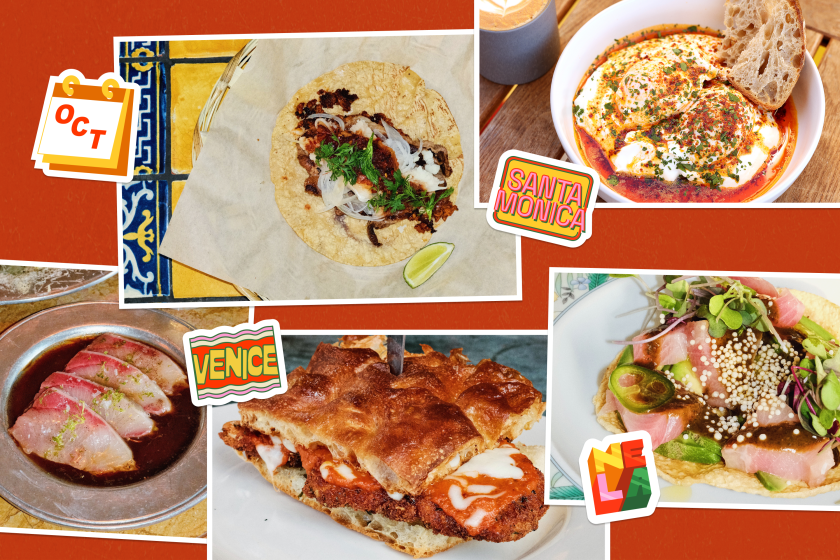Finding a haven at Tea Habitat, Alhambra’s secret shop for tea geeks
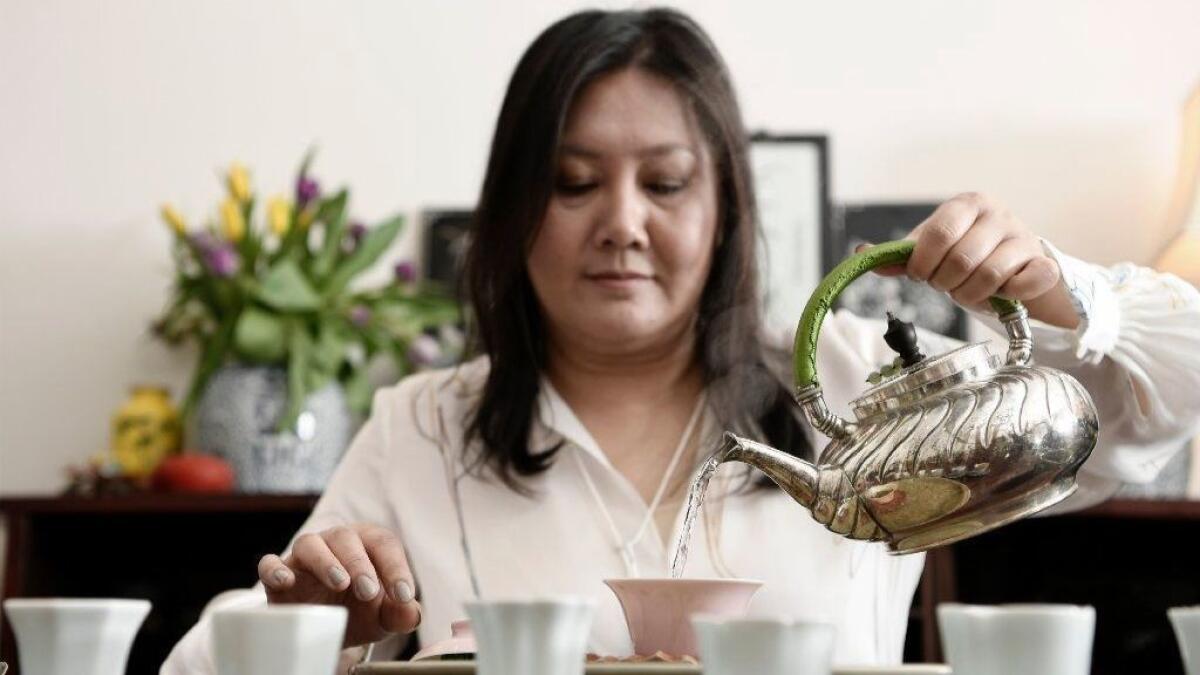
Looking around Imen Shan’s tiny, handsomely cluttered Tea Habitat in Alhambra for the first time, happiness rose up through me like daybreak. Shelves brimmed with small clay pots; palm-sized cups and saucers, many of them intricately hand-painted; gaiwans, or lidded steeping bowls; and careful rows of tea leaves packaged in silvery bags or pink boxes. I’d scheduled a couple of hours with Shan, on a cloudy Saturday in November 2016, to drink rare teas with her. I was in Los Angeles for work, two years away still from my recent move to the city.
Shan motioned for me to sit down across from her at the large rosewood table that fills most of her space. In front of her she’d arranged the tea wares used for the ritualized service called gong fu cha. That’s why I was here — as much for the grounding ceremony with which Shan presents tea as for the actual sipping of the good stuff.
Shan leveled me with a veteran interviewer’s scrutiny. “So,” she said. “How much do you know about dan cong?”
She was talking about the oolongs in which she specializes — teas that, through precise oxidation and roasting but without any flavor additions, taste miraculously of stone fruits and spices; multiple steepings can also coax out floral and mineral qualities. They come from farmers and producers who tend single trees, some of them hundreds of years old, grown in one location: the isolated Phoenix Mountain in the north of China’s Guangdong province.
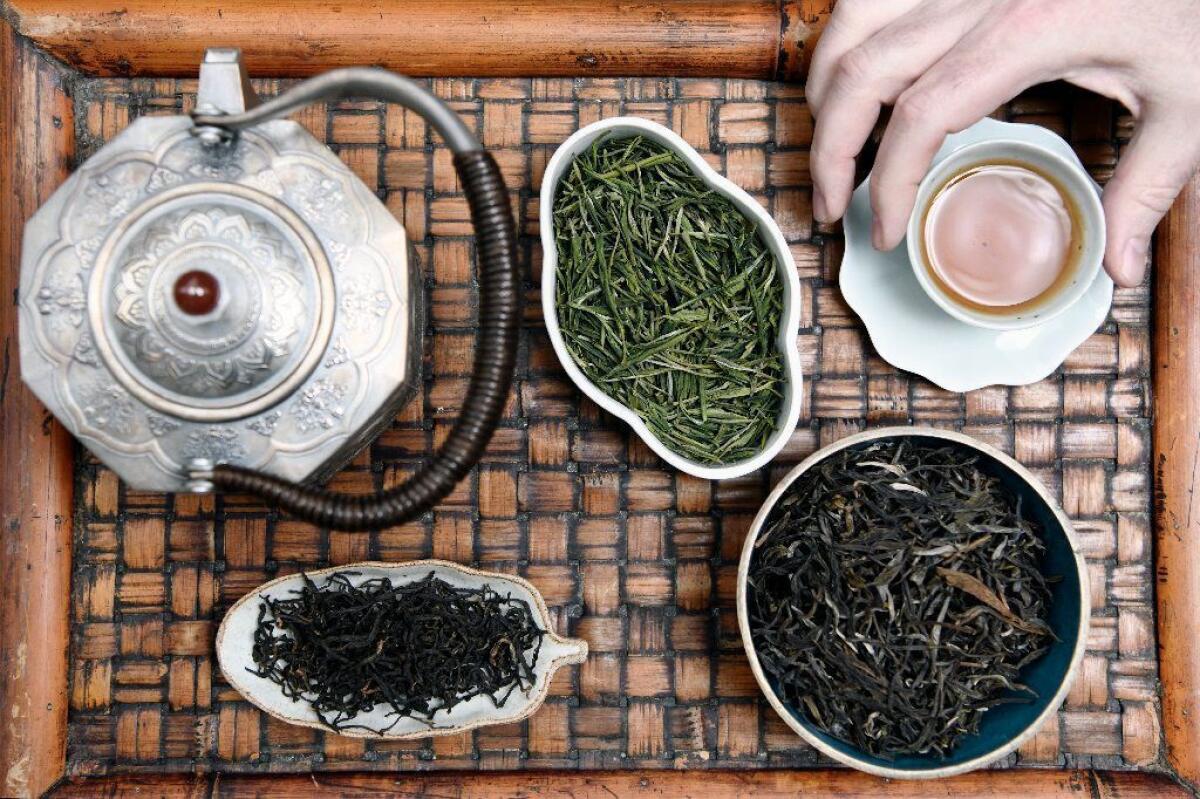
Meeting Shan, whose name I found by searching for “dan cong” online, was like reaching the top of my own summit. She is one of the most knowledgeable experts on tea in America, and I wanted to learn from her. In the last decade tea has segued from a quotidian part of life — the Lipton my mother brewed in an amber glass bowl for iced tea, my passing college-age curiosity with British afternoon tea that was really about the scones and clotted cream — to an absorption that has fueled me intellectually, gastronomically and even spiritually.
Settling in at her table, Shan nodded at my baseline knowledge of dan congs and gathered a few porcelain canisters labeled in scratchy handwriting. She pulled the lid off one and held it out to me. I inhaled the scent of the black-green, twiggy-looking leaves: sweet and earthy, revealing orange and sandalwood when I really concentrated. Shan poured nearly boiling water into a gaiwan and cups to warm them first, emptied them and then scooped a few grams of the tea into the gaiwan. She quickly “rinsed” the leaves before serving the first round of tea, thought to remove dust and debris and awaken the tea’s flavors. With the rush of steam came aromas of honey and lychee. Our tea session — our gong fu cha — had begun.
Gong fu can be translated as “skill” or “effort”; cha means “tea.” Codified steps define the ceremony: the way to wipe down a gaiwan or clay pot with a towel, decant the brewed tea into a small pitcher first before serving, hand someone a cup. The custom partly developed in Guangdong, the birthplace of dan congs and also of Shan, who moved to Southern California from the area (then more commonly known then to Westerners as Canton) with her family in the 1980s, when she was a teenager. Giving herself to the business of rare teas, which involves ceaselessly building relationships with farmers and trustworthy brokers and navigating import headaches, has also helped her maintain a connection to the culture she left behind.
***
I guess I qualify as a seeker. I traveled three weeks out of most every month for almost five years as national critic for Eater; the road consumed me so much that I eventually gave up a permanent home. Tea was a budding fascination before that gig. I’d learned that all tea varieties — black, green, white, oolong and fermented variations like pu-erh — are derived from the same plant, camellia sinensis. (Tisanes, or herbal infusions, can’t accurately be called tea.) I was smitten by the contrasting grassiness or fruitiness in different high-quality greens. And how distinct the styles made in sundry provinces of China varied from the teas crafted in Taiwan and Japan and India. It didn’t take long to understand that, with this subject, there weren’t just rabbit holes to tumble down, there were catacombs.
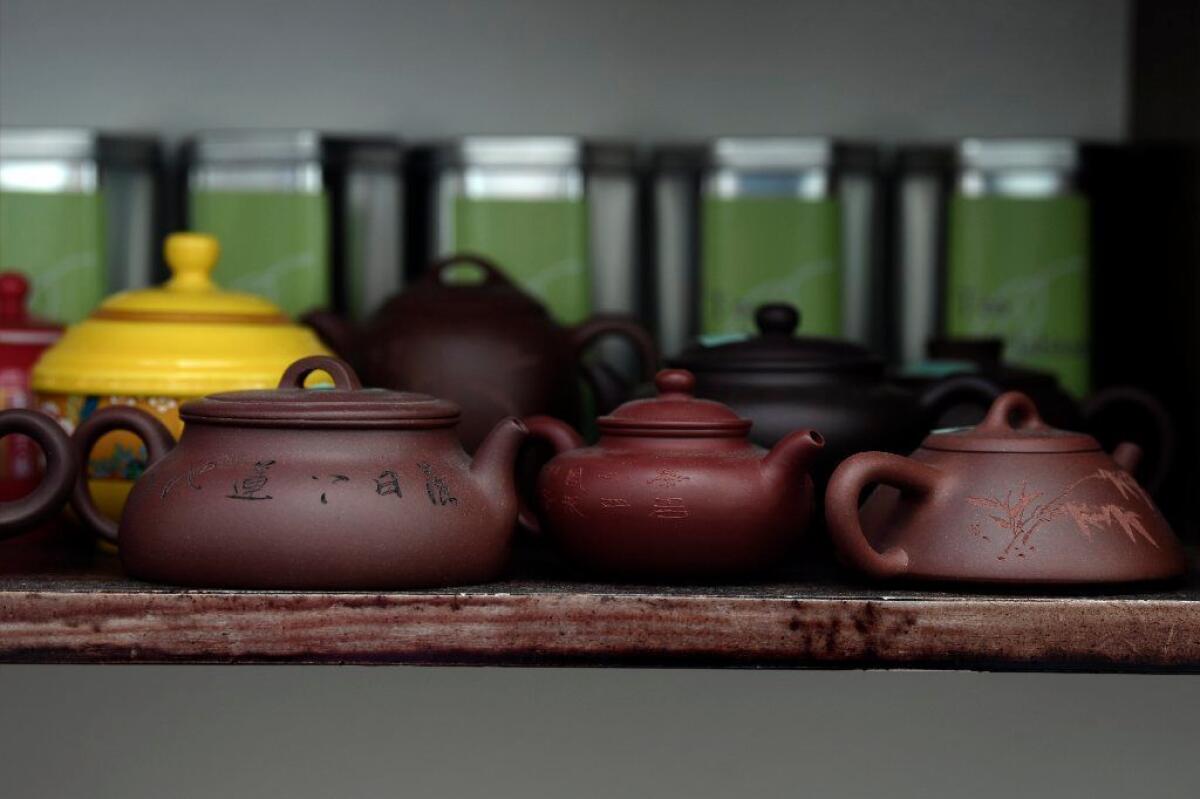
Going deep over the most sublime expressions of tea is similar to next-level obsessions with wine or coffee or chocolate — though with far, far fewer cool points. When tea fervor grips you unshakably, it will make your intimates roll their eyes if not directly nod off. You’ll be rambling about water sources and temperatures and steep times and water-to-tea ratios, gazing adoringly at the late-harvested-straw color of the liquid in your cup. The non-initiate in your kitchen will glare at you, asking why you didn’t fall instead for photography, or vintage bourbon, or wreck diving.
The more I learned, and the more people I met who knew universes beyond me, the more I was enthralled specifically by oolongs. If the best green teas are the super-fresh mozzarellas of the tea world and savory black teas are the cheddars so sharp they’re almost tannic, oolongs cover much of the vast territory in between: Some register as springy and almost creamy, but other variations can also be sweet or nutty or vegetal or charcoal-roasted and meaty. I took to lugging around bags of oolongs and basic tea-brewing tools in my increasingly battered and overstuffed backpack.
But I invested in tea equally for the connection. Choosing not to have a stable home dismantled me in ways I’m still piecing together. For starters, I was terrible at building any self-sustaining structure — morning exercise, an hour reading, anything to create continuity in my days. Various storytelling traditions recount the soul’s need to catch up with the body during travel. If my soul has to follow my exact trajectory to rejoin my body, it’s probably in the vicinity of Dearborn, Mich., right now, with many thousands of miles still ahead.
It didn’t take long to understand that, with the subject of tea, there weren’t just rabbit holes to tumble down, there were catacombs.
I never felt more present on the road than when I slowed down to share gong fu cha with someone exceptionally knowledgeable. “Ceremony” can be a big, affected, spooky word. For many of us it connotes weddings or holy sacrament. In the scope of traditional Chinese tea culture, it means making the effort to be present: to prepare the tea respectfully, to reveal its qualities, to show up to the moment with the others around you, to be your own sense of place right then and there.
***
Tea Habitat currently resides in a two-story residential complex in downtown Alhambra, housed in a courtyard where identical beige doors stare blankly at you from every direction. Shan’s business is now mostly wholesale; her teas aren’t cheap. They start at $20 for three ounces of good black tea; some dan cong can cost $70 or more for a single ounce; with numerous steepings, and astonishing flavor, that small quantity can go far, but it’s obviously an investment.
Only the truest tea seekers take the pains to contact Shan via Tea Habitat’s website (teahabitat.com) and schedule time to drink with her in person. It turned out Shan was the ideal tea guide for me.
I flipped out over the way the different dan cong teas conjured the ripest peach dipped in chocolate, or sweet potato, or orange flower water, or how jasmine really smells. Some tea specialists can be very prim or starchy in their gong fu cha presentation. That isn’t Shan. While obviously respectful to the value of her product, she laughs at herself when she occasionally splashes while pouring tea; she has an endearing habit of swatting at brewing leaves with the lid of her favorite pink gaiwan.
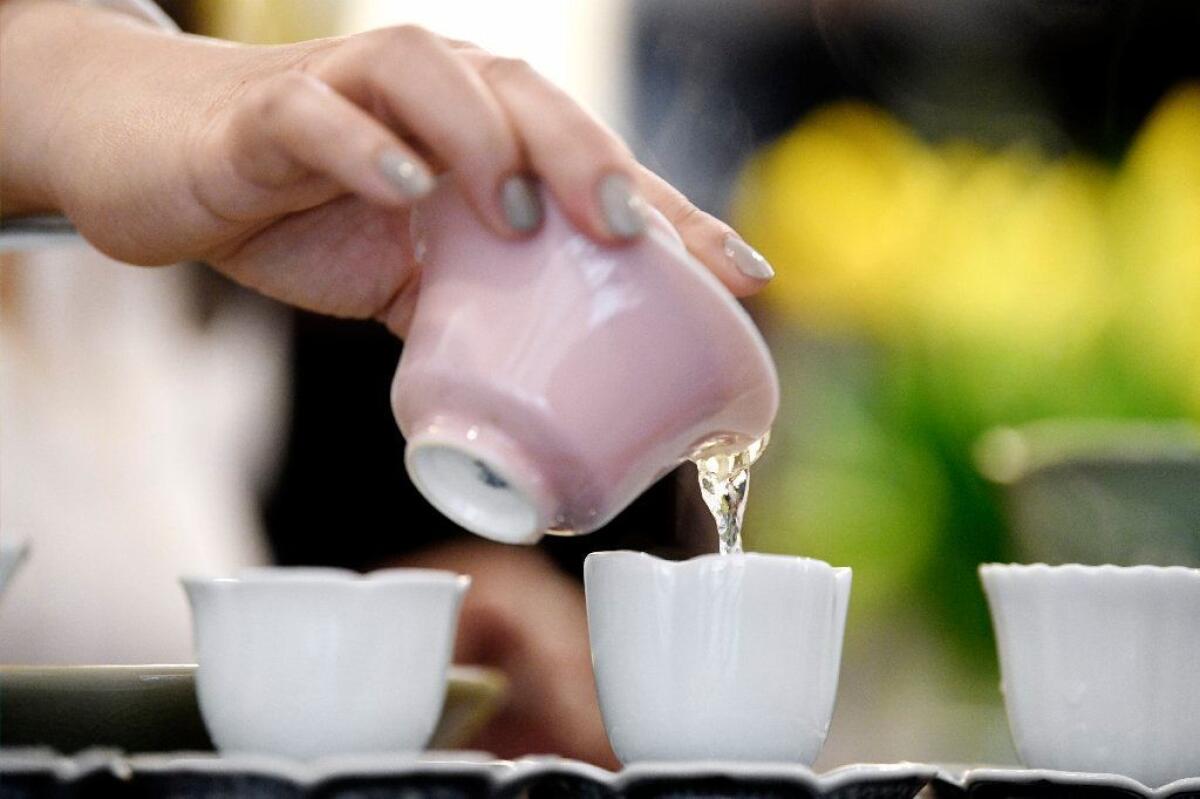
In conversation she drops right to the marrow. I visited her those years of traveling every time I passed through Los Angeles, four or five times a year. Our initial conversation stuck to talk of tea and the Cantonese restaurants her family favors in the San Gabriel Valley. After that, we wouldn’t get through a half-dozen steepings of the day’s first tea before laying it all out: family, love, loss, attachment, loneliness, music, aging, wandering, careers, community. Our moods both lightened and darkened as we grew increasingly tea-drunk, a very real state in which you feel both eyes-wide-open lucid and radically calm. I’m too much of a control freak for recreational drugs; drinking tea after tea with Shan is about the most stoned I’ll likely ever be.
Hopefully exceptional teas and the ceremony around them will find more of an audience in L.A. Denong Tea in Pasadena specializes in pu-erhs, with a tea bar that can feel uncomfortably quiet in the afternoon but apparently bustles with regulars around 8 p.m. Betty Hallock, former deputy food editor at The Times, will ritually serve a variety of Japanese teas at Orsa & Winston in downtown L.A. with an advance request to the restaurant.
For me, Tea Habitat has become home. Shan graciously introduced me to her inner circle of tea drinkers; we gather at her shop, occasionally along with first-timers from elsewhere who thoughtfully trace their fingers on the tea ware — the gritty-smooth clay pots, the cool, infinite circles of the cups and saucers — the way I did my first time.
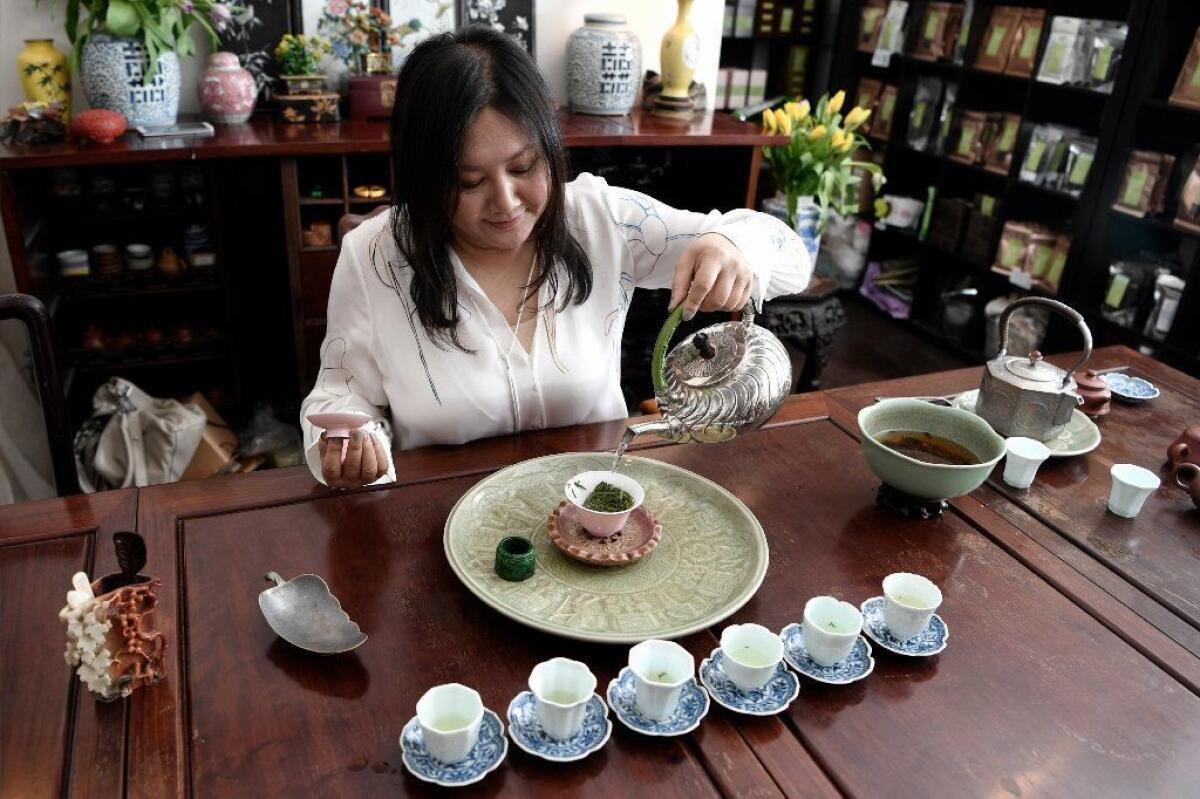
We’re buddies now, Shan and I. Every now and then it’ll be the two of us, drinking oolongs for hours. Loopy from caffeine and theobromine and too much searching conversation, a bowl full of spent tea leaves nearly spilling over between us, she’ll close up her hidden shop in a hurry and we’ll head out for dumplings or noodles or roasted duck. And then maybe we’ll come back and have a round or two more of tea.
Instagram: @bill_addison
Twitter: @billaddison
More to Read
Eat your way across L.A.
Get our weekly Tasting Notes newsletter for reviews, news and more.
You may occasionally receive promotional content from the Los Angeles Times.







